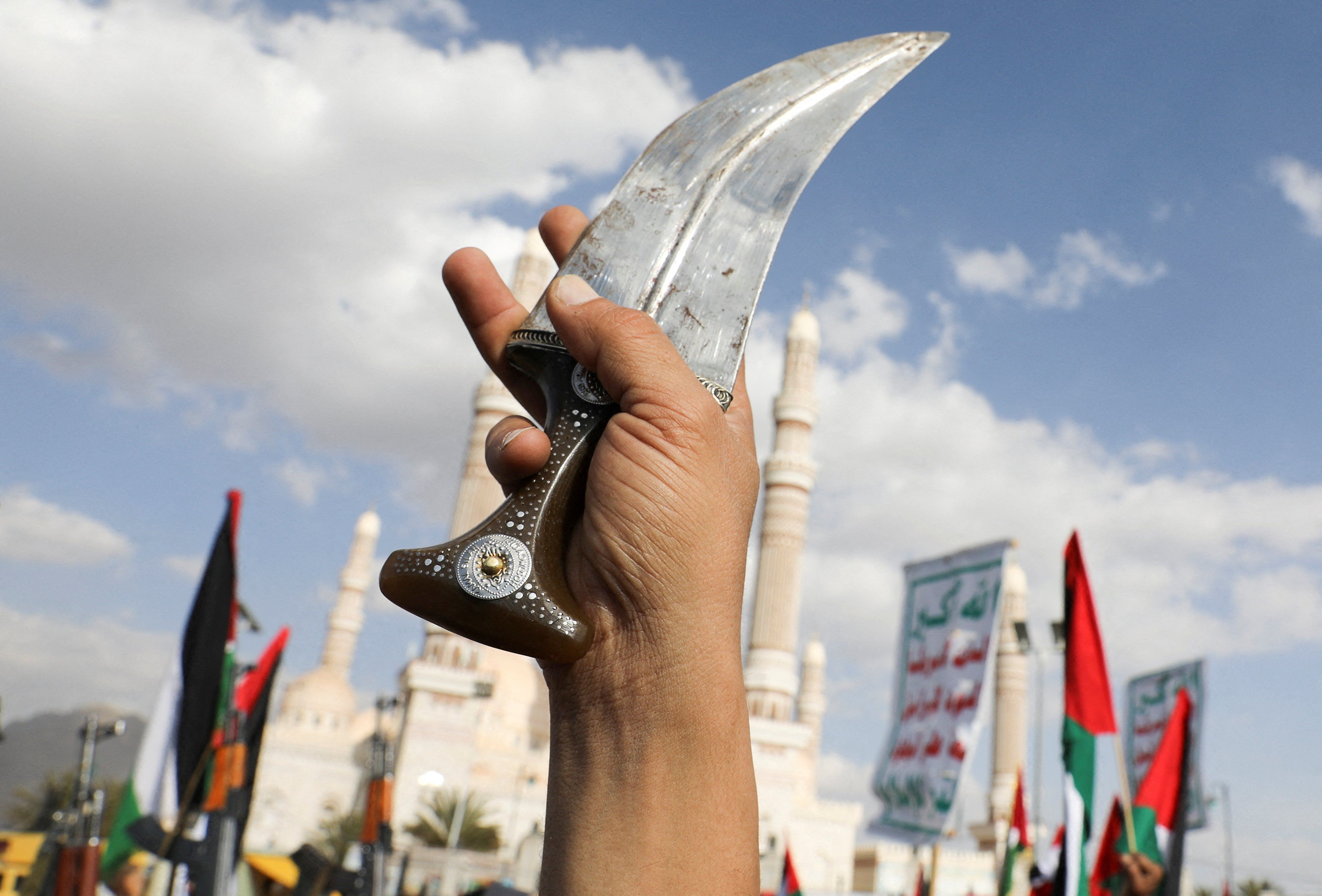The US could be on the verge of directly targeting Iran-backed Houthis in Yemen for the first time since the Israel-Hamas war began after the militants aimed a massive barrage of projectiles – 18 drones, an anti-ship missile, and two cruise missiles – at shipping lanes in the Red Sea late Tuesday.
The Houthis have been going after commercial vessels in the Red Sea for weeks in response to Israel’s offensive in Gaza, disrupting global commerce in the process. Tuesday’s attack, which was ultimately thwarted by US and UK warships, stood apart in terms of its sheer size and sophistication.
US Secretary of State Antony Blinken, who’s on a tour of the Middle East and trying to prevent a broader conflict in the region, declined to say what specific steps Washington would take in response – but signaled that it would not go unanswered.
“We’ve made clear, we’ve been clear with more than 20 other countries that if it continues, as it did yesterday, there will be consequences,” Blinken said Wednesday. This echoed a warning from the US and its allies last week that emphasized the Houthis would face serious consequences if it continued attacks in the area.
In late December, US Navy helicopters killed 10 Houthi fighters and sank several of their vessels as they targeted a cargo ship in the first deadly clash since the Red Sea attacks began. Still, the Biden administration has so far avoided retaliating against the Houthis on land as it seeks to lower the temperature in the region, despite the US’s recent targeting of other Iranian proxies in Iraq and Syria. Washington has been more cautious about carrying out strikes in Yemen, which is barely holding together a fragile truce after years of devastating civil war.
But everything the US has done to deter the Houthis from continued attacks in the Red Sea has failed up to this point, and Washington may feel it has no choice but to respond with force. The US has
prepared options to strike the Houthis, according to recent reporting, and we’ll be watching to see what happens next.
